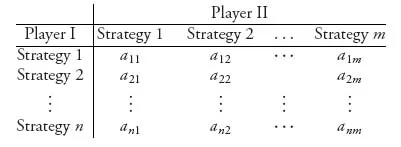
Game Theory
An Introduction
E. N. Barron
- English
- ePUB (disponibile sull'app)
- Disponibile su iOS e Android
Game Theory
An Introduction
E. N. Barron
Informazioni sul libro
An exciting new edition of the popular introduction to game theory and its applications
The thoroughly expanded Second Edition presents a unique, hands-on approach to game theory. While most books on the subject are too abstract or too basic for mathematicians, Game Theory: An Introduction, Second Edition offers a blend of theory and applications, allowing readers to use theory and software to create and analyze real-world decision-making models.
With a rigorous, yet accessible, treatment of mathematics, the book focuses on results that can be used to determine optimal game strategies. Game Theory: An Introduction, Second Edition demonstrates how to use modern software, such as Maple™, Mathematica®, and Gambit, to create, analyze, and implement effective decision-making models. Coverage includes the main aspects of game theory including the fundamentals of two-person zero-sum games, cooperative games, and population games as well as a large number of examples from various fields, such as economics, transportation, warfare, asset distribution, political science, and biology. The Second Edition features: • A new chapter on extensive games, which greatly expands the implementation of available models • New sections on correlated equilibria and exact formulas for three-player cooperative games • Many updated topics including threats in bargaining games and evolutionary stable strategies • Solutions and methods used to solve all odd-numbered problems • A companion website containing the related Maple and Mathematica data sets and code
A trusted and proven guide for students of mathematics and economics, Game Theory: An Introduction, Second Edition is also an excellent resource for researchers and practitioners in economics, finance, engineering, operations research, statistics, and computer science.
Domande frequenti
Informazioni
